Castle Rock Pueblo at Sand Canyon
The fascinating and violent prehistory of Sand Canyon.
One of the high points of a visit to Cortez, Colorado is seeing Sand Canyon. It’s a wonderful spot to visit. It’s got spectacular views and lots of ruins, along with great horse, biking, and hiking trails.
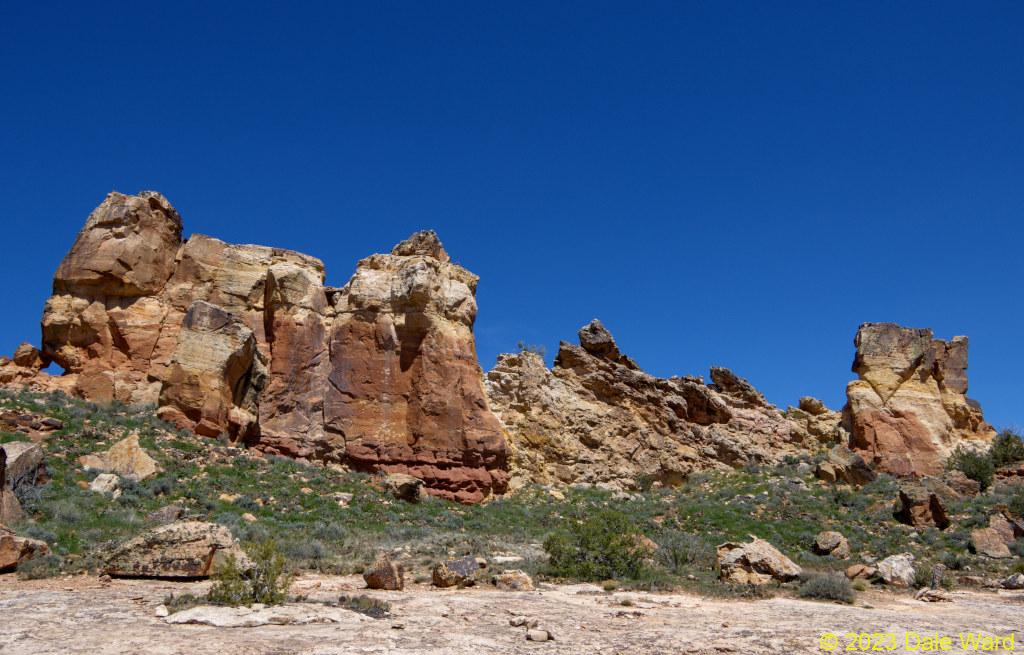 Castle Rock, seen from the parking lot (looking North).
Castle Rock, seen from the parking lot (looking North).
Castle Rock is immediately adjacent to the McElmo Canyon parking lot for Sand Canyon. You can’t miss it, it’s right there when you get out of the car.
It’s a remarkable place, one that I love to visit. And I was astonished to find that it’s also the site of a prehistoric massacre.
The Castle Rock Pueblo was built around and on the Castle Rock buttes - the prominent rock structures that are near the western-most Sand Canyon parking lot. There were approximately 16 kivas, 40 surface rooms, and 9 towers, both surrounding and on top of the buttes. Most of the structures are gone - knocked over and scattered, buried in gravel, etc.
A lot of the stones and structures were scavenged by settlers near the end of the 19th century, the pre-cut stones especially convenient for building houses.
Construction on the pueblo started around 1256 AD, and the pueblo was abandoned sometime in the mid-1280s AD. There were probably between 70 and 150 people living there at one point.
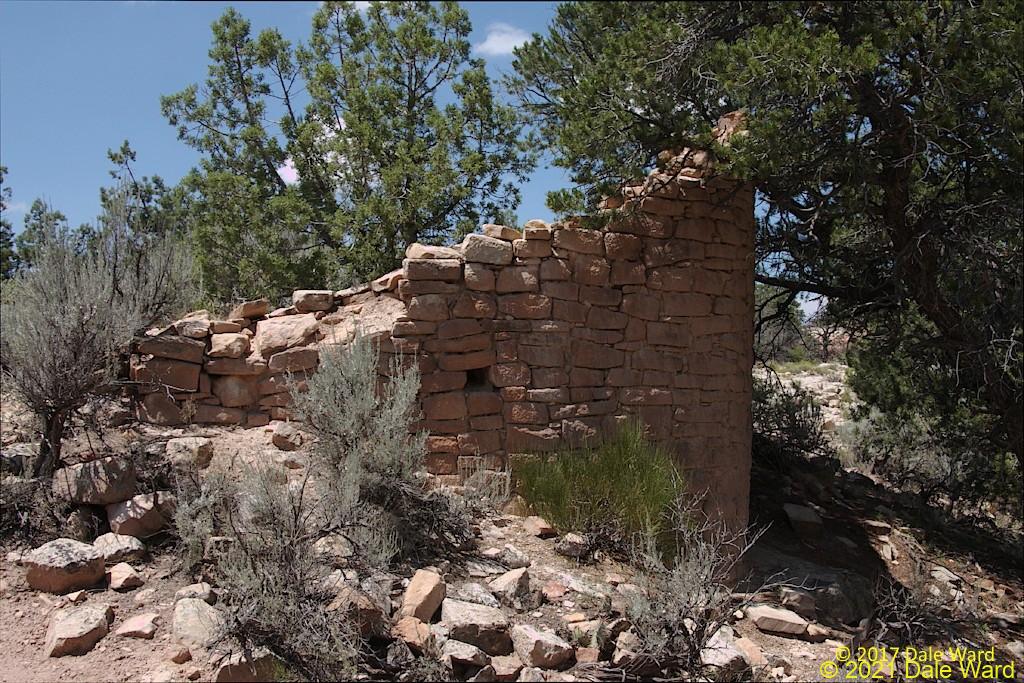 Structure just north of Castle Rock. I’m not sure if this was a tower, originally
Structure just north of Castle Rock. I’m not sure if this was a tower, originally
Crow Canyon Archaeological Center excavated much of the site from 1990-1994. And as they dug, they found skeletons. Lots of skeletons, actually. The remains of 41 men, women and children were found in the roughly 5% of the the site that was excavated.
The skeletons bore marks of violent deaths - smashed bones, cuts on the bone from stone hatchets and markings indicating scalping. The bodies had been left scattered around the Pueblo, and there were signs of cannibalism.
A lot of other sites from Cortez to Hovenweep also show signs of having met violent ends around the same time, the late 1200s. For example, one of the popular hiking/biking trails that originates at the Castle Rock Pueblo parking lot goes to the Sand Canyon Pueblo, 6-7 miles to up to the head of Sand Canyon. There were signs of violent death there, as well.
Analyses of the Castle Rock Pueblo dig (see references at the end of this post) suggest that there were several small raids on the Castle Rock pueblo, culminating in a final, large raid of about 200 warriors.
It’s not clear who these raiders were. Some researchers suggest that nomadic raiders massacred the people of the pueblo. Others say it may have been the result of war between pueblos.
I’ve even read that it may have been organized political violence. Perhaps something like ‘Death Squads’, maybe sent out from the political center at Aztec, NM.
I don’t think anybody really knows.
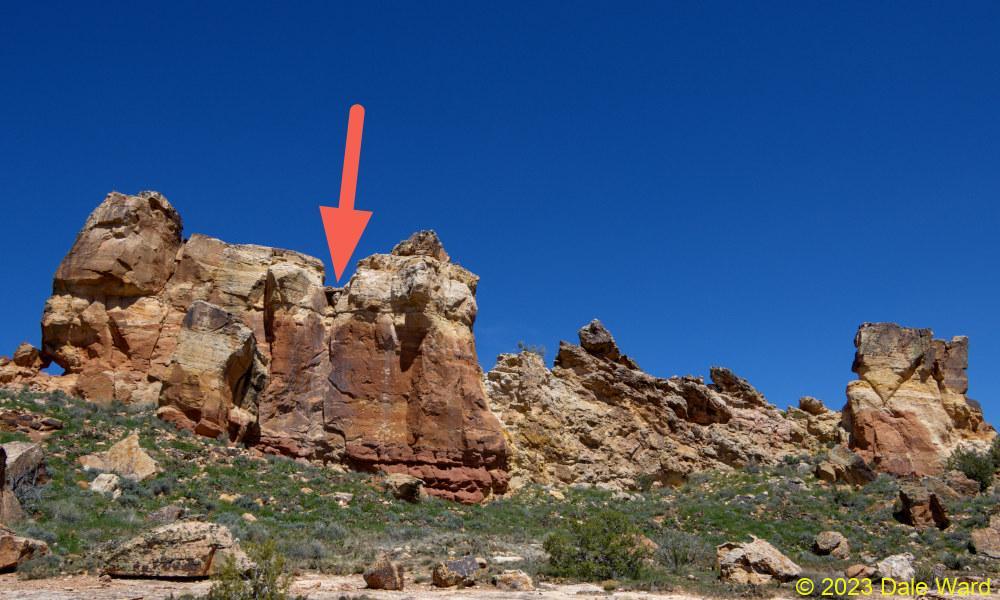 Castle Rock, view from the parking lot to the South. The pink arrow indicates an Ancestral Puebloan wooden-beam platform - with the remains of ruin on it. See the photo below for a closer view.
Castle Rock, view from the parking lot to the South. The pink arrow indicates an Ancestral Puebloan wooden-beam platform - with the remains of ruin on it. See the photo below for a closer view.
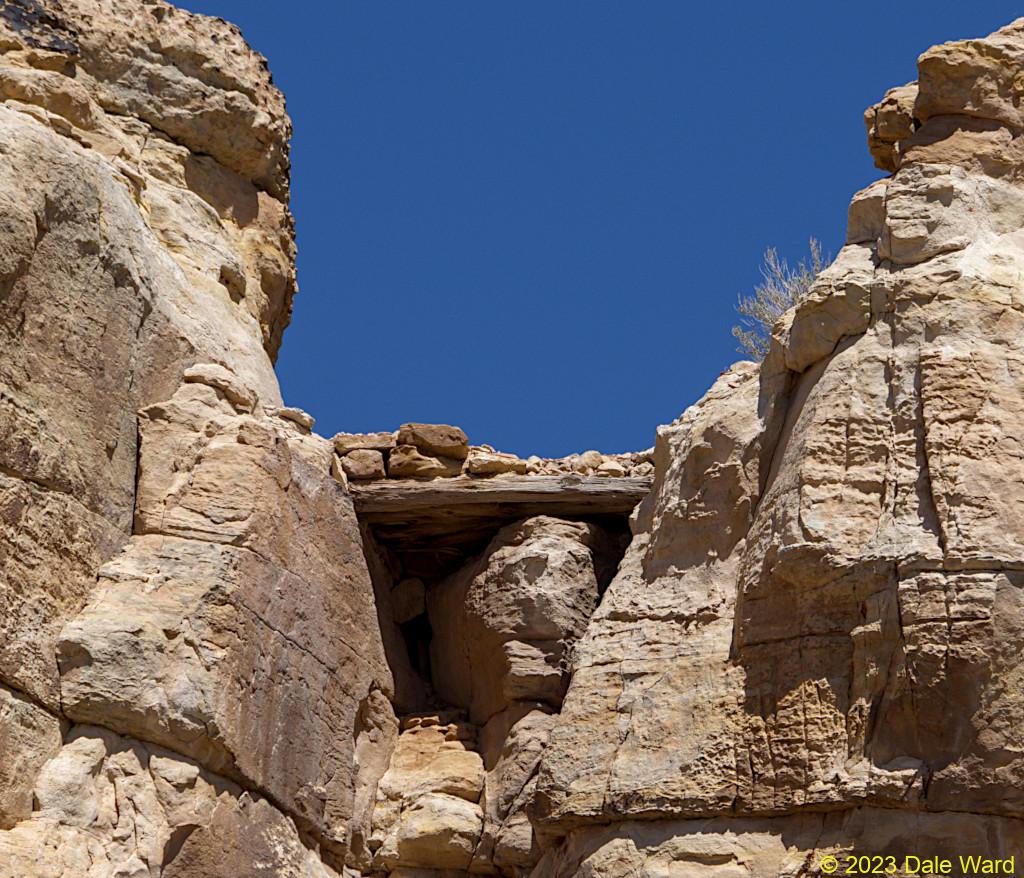 Closer view of the platform on Castle Rock. You can see the remains of an Ancestral Puebloan ruin that was built on the platform. Old photos from the early 1900s show a more complete ruin on this platform.
Closer view of the platform on Castle Rock. You can see the remains of an Ancestral Puebloan ruin that was built on the platform. Old photos from the early 1900s show a more complete ruin on this platform.
I think that knowing something about the violence woven into the history of the Four Corners, while disturbing, also makes that history more immediate. These peoples - their beliefs, their societies, their politics - were not some sort of idealized utopian fairy tale, as many museum displays and dioramas suggest.
They were, for better or worse, not so very different than us.
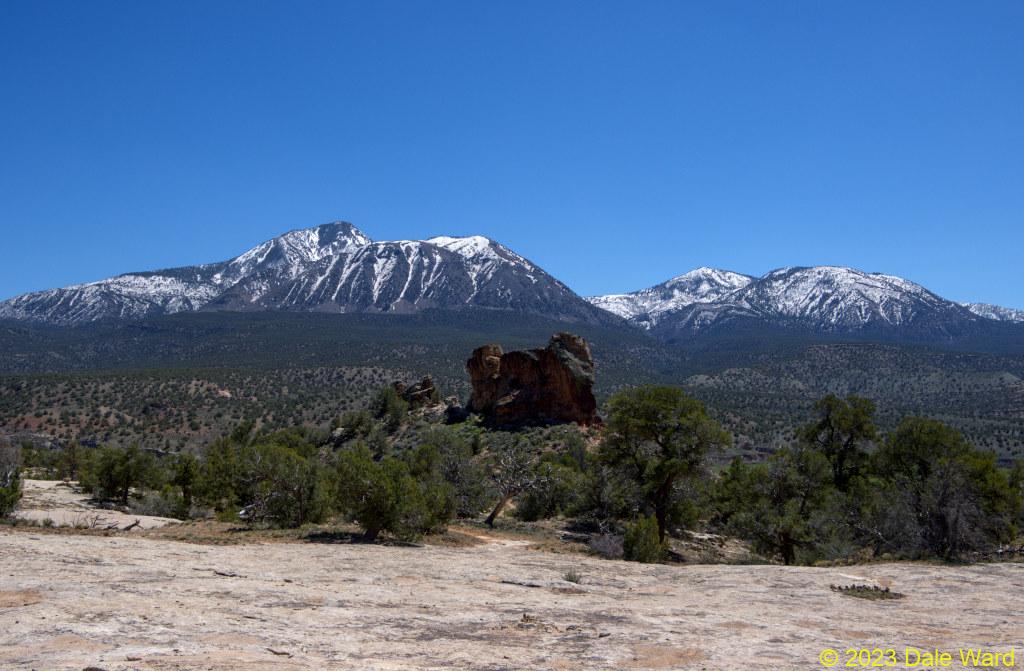 Castle Rock, seen from the slickrock to the North. You can see Ute Mountain in the background, still covered in snow.
Castle Rock, seen from the slickrock to the North. You can see Ute Mountain in the background, still covered in snow.
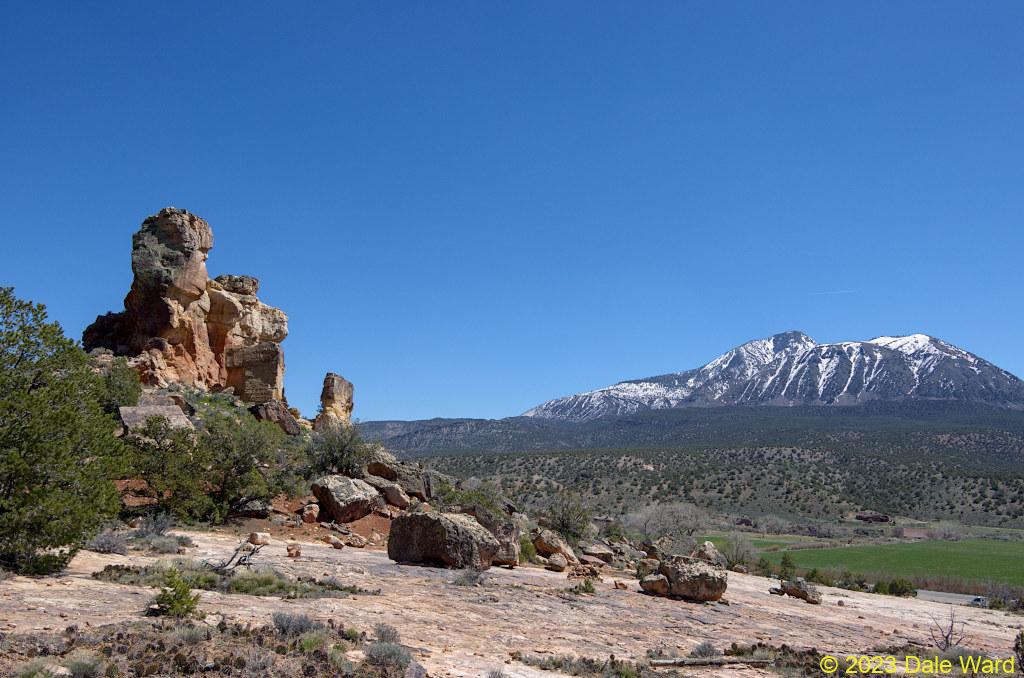 View from the West of Castle Rock, snow covered Ute Mountain on the right-hand side of the photo
View from the West of Castle Rock, snow covered Ute Mountain on the right-hand side of the photo
References:
House of Rain: Tracking a Vanished Civilization Across the American Southwest. Craig Childs. 2008.
The Archaelogy of Castle Rock Pueblo Kristen A. Kukelman (ed.), Crow Canyon Archaeological Center. 2000.
The Bioarchaeology and Taphonomy of Violence at Castle Rock and Sand Canyon Pueblos, Southwestern Colorado. Debra L. Martin, Ricky R. Lightfoot, Kristin A. Kuckelman. 2002. Here is an alternate link to this article.
The Chaco Meridian: One Thousand Years of Political and Religious Power in the Ancient Southwest. Stephen H. Lekson. Rowman & Littlefield Publishers; Second edition. ISBN 9781442246454. 2015.